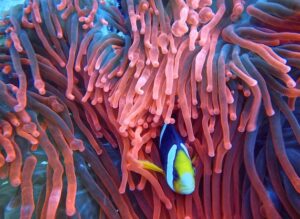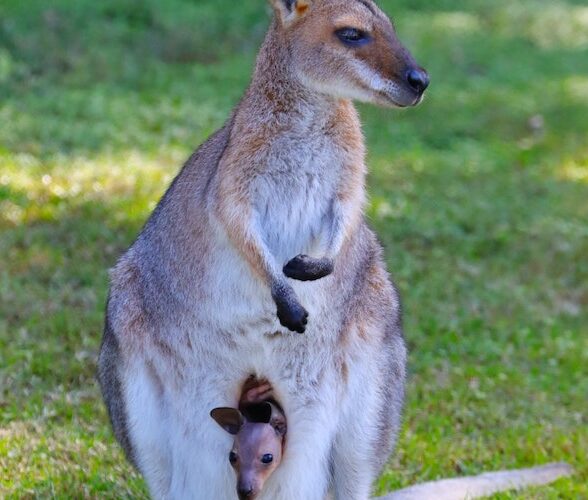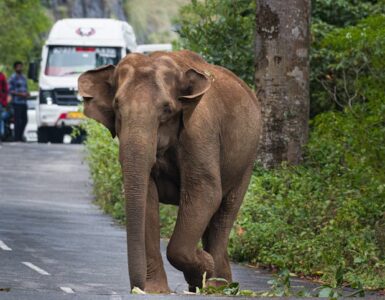Australia is not just about the majestic Sydney Opera House, the splendid Harbor Bridge, or mesmerizing beaches.
The man-made architectural wonders or beaches can be found in many other countries and regions; what makes Australia unique is the amazing number of natural wonders only found in the country.
The island nation offers breathtaking scenic landscapes and incredible biodiversity that have been formed due to Earth’s natural geological and ecological process. Mother Nature has gifted Australia with many incredible natural attractions that cannot be found anywhere else in the world.
Great Barrier Reef

This is probably Australia’s most famous natural wonder – the Great Barrier Reef was born 25 million years ago and is the world’s largest reef system. The complex system stretches over 2,000 kilometers off the Queensland coast, the North-Western part of Australia.
The Great Barrier Reef ecosystem has 400 different types of dazzling corals supporting vivid marine life. There are sea turtles, sting rays, reef sharks, and 1,500 species of tropical fish of every color and size.
If there are aliens in outer space, they can also see this structure. Great Barrier Reef is the only living thing on Earth visible from space.
Want to know more about a special marine fish, Wally, known for its size and inquisitiveness? Read here.
Want to know more about the importance of Coral? Read here.
Uluru or Ayers Rock
Uluru is a natural and cultural marvel made of sandstone. The formation is the largest single rock known in the world, standing 348 meters high (1,142 feet) with a circumference of 9.4 kilometers.
The Inselberg is an unmistakable icon and one of the most famous landmarks in Australia. Located in the center of the Australian continent, scientists have aged this rock at around 550 million years.
It is not something that caught the fancy of modern civilization; the piece of rock is a sacred site to the indigenous people, who also gave its name Uluru. According to the local Aboriginal people, Uluru’s formations were formed due to ancestral traditions. Cultural customs and traditions are regularly held by these people even today.
Uluru, also known as Ayers Rock, is famous for its gorgeous red colors at sunrise and sunset. The area is surrounded by biodiversity, including trees, plant species, birds, mammals, and reptiles.
Daintree Forest
The Amazon may be the largest rainforest in the world, but the Daintree Rainforest is the world’s oldest rainforest. The Daintree Rainforest covers an area of 1200 square kilometers and is believed to be 135 million years old.
If Australia is the land of natural wonders, the state of Queensland is its capital, as both the Great Barrier Reef and Daintree forests are located in this region.
The rainforest provides habitats for one of the greatest biodiversities in the world, as it holds many indigenous species of flora and fauna. It has dense palm canopies, pristine waterfalls, ancient trees, and a 140-kilometer-long Daintree River. The region provides a home to crocodiles, cassowaries, snakes, lizards, insects, and butterflies.
Pinnacles
Another famous natural wonder in Australia is the Pinnacles Desert, characterized by thousands of limestone formations. These unique limestone formations located on the coast of Western Australia were created 30,000 years ago when the receding ocean left deposits of seashells on the shore.
Thousand of the formations, which come in different shapes, colors, and sizes, some standing as tall as 12 feet, make this place surreal.
Pinnacles desert is protected within Nambung National Park, home to fantastic wildlife, including grey kangaroos, possums, wallabies, snakes, lizards, and emus.
Blue Mountains
The Blue Mountains in New South Wales near Sydney are about ten times older than the Grand Canyon, as they are said to be around 470 million years old.
Almost the entire jagged mountain range is covered with different species of eucalyptus trees. Many other species of plants are found in the Blue Mountains, which cannot be found elsewhere in the world. In 1994, David Noble discovered the world’s oldest species of plants – including Wollemi pines, which is believed to have become extinct 30 million years ago.
The Blue Mountains derives its name from the blue haze that seems to shroud the mountain when viewed from a distance. The blue tinge on the Eucalyptus-covered forest results from the optical phenomenon that scatters the sun’s ultraviolet rays in the atmosphere.
The Blue Mountains are also linked with several strange myths and mysterious legends, including the most famous Three Sisters, which is a three-distinct limestone rock formation.
Jenolan Caves
On the edge of the Blue Mountains lies another natural wonder in Australia, Jenolan Caves, the world’s oldest caves and one of the most impressive and famous cave systems. Dating back to 340 million years ago, these caves were the first in the world to gain legal protection in 1872.
The Jenolan Caves are a series of caves, tunnels, and chambers formed by two converging streams, which include speleothems, straws, shawls, columns, helictites, canopies, etc.
The dissolved calcium carbonate in the limestone makes some incredible formations and natural sculptures that offer surreal experiences. The various stalactites (formations that protrude downwards from the cave ceiling) and stalagmites (grow upwards from the ground) make incredible shapes and sizes. Some formations are pure white, while others are red, brown, or yellow due to iron oxides and hydroxides.
The Jenolan Caves were also the first in the world to have electric lighting to add to the captivating experience.
Fraser Island
With an area of more than 1600 square kilometers, Fraser Island is the largest sand island in the world.
Listed as a World Heritage Site, Fraser Island is the only known place where rainforest grows on sand. Lying along the eastern coast of Australia, other things that make Fraser Island popular are dunes, freshwater lakes, swamps, and abundant wildlife.
Speaking of wildlife, Australia is also famous for a few prominent animal species only found in that country.
Kangaroos and Wallabies
Kangaroos and wallabies are marsupials belonging to a small animal group called macropods. They are a special breed of animals only found in Australia.
Kangaroos and wallabies are famous for hopping and having pouches in their bellies that carry their young ones until they can fend for themselves.
Their presence in Australia is so widespread that Kangaroos are a national symbol of Australia, found even on its coat of arms.
Koala
If Kangaroos are loved for their uniqueness, one more animal species in Australia is adorned for its cuteness.
There is only one species of Koala in the world.
These adorable animals can be found clutching the eucalyptus trees. Koalas survive on a diet of eucalyptus leaves and can eat up to a kilogram (over two pounds) a day. As their diet is low, they need to sleep a lot to conserve their energy, ranging between 18 and 22 hours a day.
Wrapping Up
There is an Australian Aboriginal Proverb, “We are all visitors to this time. This place we are just passing through. Our purpose here is to Observe. To Learn. To Grow. To Love. And then we return home.”
Natural Wonders in Australia allows us to observe, learn, and grow from what our mother nature offers us.






Add comment